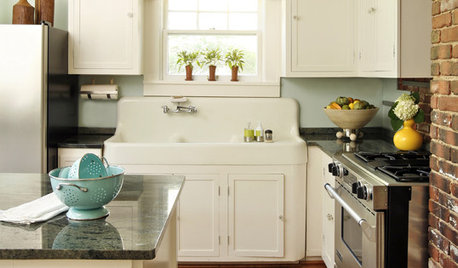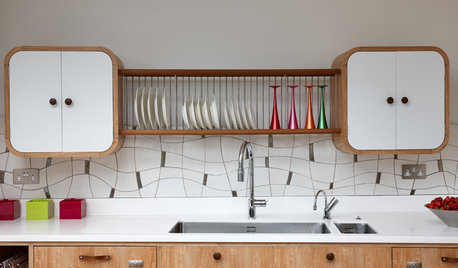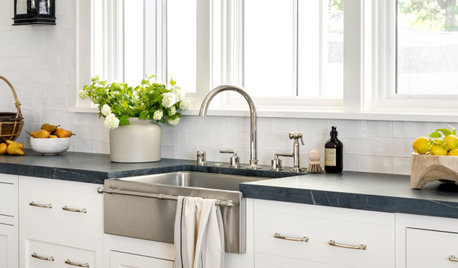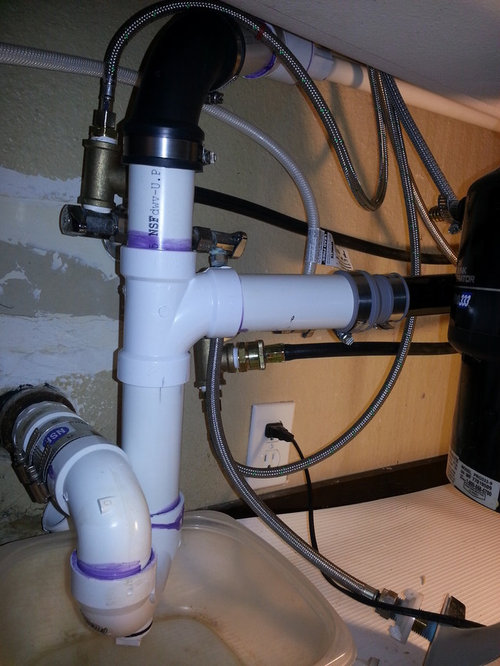Washing Machine Drain Under Kitchen Sink
detroittola
10 years ago
Related Stories

KITCHEN DESIGNKitchen Sinks: Antibacterial Copper Gives Kitchens a Gleam
If you want a classic sink material that rejects bacteria, babies your dishes and develops a patina, copper is for you
Full Story
KITCHEN DESIGNTap Into 8 Easy Kitchen Sink Updates
Send dishwashing drudgery down the drain with these ideas for revitalizing the area around your kitchen sink
Full Story
KITCHEN DESIGN8 Stylish Sink Types for Kitchens of All Kinds
Choose the wrong sink and your kitchen renovation efforts may go down the drain — these sinks will let you clean up in the style department
Full Story
KITCHEN SINKSWhy You May Want a Separate Cleanup Sink in Your Kitchen
A cleanup sink plays a distinct role in the kitchen. Here’s what to consider when planning yours
Full Story
PHOTO FLIP60 Kitchen Sinks With Mesmerizing Views
Check out this parade of views from the kitchen sink and tell us: Which offers the best backdrop for doing the dishes?
Full Story
KITCHEN LAYOUTSWindowless Kitchen Sinks: Looking Beyond the (Lack of a) View
Does your sink need a focal point? Here are 12 ideas for creating visual interest where you scrub your pans
Full Story
KITCHEN DESIGNRenovation Detail: The Kitchen Sink Window
Doing dishes is anything but a chore when a window lets you drift off into the view beyond the kitchen sink
Full Story
MOST POPULARHow to Choose the Right Kitchen Sink
Learn about basin configurations, sink shapes, materials and even accessories and specialty sinks
Full Story
KITCHEN DESIGN8 Ways to Configure Your Kitchen Sink
One sink or two? Single bowl or double? Determine which setup works best for you
Full Story
KITCHEN DESIGN8 Kitchen Sink Materials to Consider
Learn the pros and cons of these common choices for kitchen sinks
Full Story








laundryvet
detroittolaOriginal Author
Related Professionals
Oneida Kitchen & Bathroom Designers · Owasso Kitchen & Bathroom Designers · Hunters Creek Kitchen & Bathroom Remodelers · Patterson Kitchen & Bathroom Remodelers · Darby Custom Closet Designers · Annandale Custom Closet Designers · Elgin Flooring Contractors · Glen Burnie Flooring Contractors · Golden Glades Flooring Contractors · Honolulu Flooring Contractors · Jamaica Plain Flooring Contractors · Manteca Flooring Contractors · Topeka Flooring Contractors · White Bear Lake Flooring Contractors · Wixom Flooring Contractorslaundryvet
detroittolaOriginal Author
User
detroittolaOriginal Author
detroittolaOriginal Author
elizabeth_des_thons
detroittolaOriginal Author